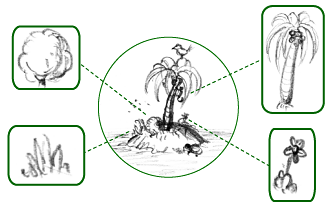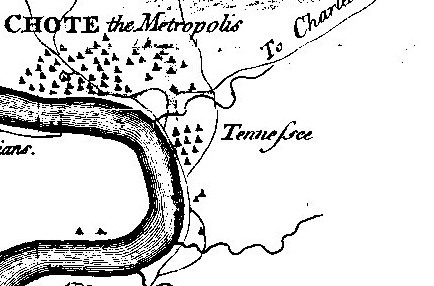|
Iris Versicolor
''Iris versicolor'' is also commonly known as the blue flag, harlequin blueflag, larger blue flag, northern blue flag, and poison flag, plus other variations of these names, and in Britain and Ireland as purple iris. It is a species of '' Iris'' native to North America, in the Eastern United States and Eastern Canada. It is common in sedge meadows, marshes, and along streambanks and shores. The specific epithet ''versicolor'' means "variously coloured". It is one of the three ''Iris'' species in the ''Iris'' flower data set outlined by Ronald Fisher in his 1936 paper "The use of multiple measurements in taxonomic problems" as an example of linear discriminant analysis. Description ''Iris versicolor'' is a flowering herbaceous perennial plant, growing high. It tends to form large clumps from thick, creeping rhizomes. The unwinged, erect stems generally have basal leaves that are more than wide. Leaves are folded on the midribs so that they form an overlapping flat fan. ... [...More Info...] [...Related Items...] OR: [Wikipedia] [Google] [Baidu] |
Carl Linnaeus
Carl Linnaeus (; 23 May 1707 – 10 January 1778), also known after his ennoblement in 1761 as Carl von Linné Blunt (2004), p. 171. (), was a Swedish botanist, zoologist, taxonomist, and physician who formalised binomial nomenclature, the modern system of naming organisms. He is known as the "father of modern taxonomy". Many of his writings were in Latin; his name is rendered in Latin as and, after his 1761 ennoblement, as . Linnaeus was born in Råshult, the countryside of Småland, in southern Sweden. He received most of his higher education at Uppsala University and began giving lectures in botany there in 1730. He lived abroad between 1735 and 1738, where he studied and also published the first edition of his ' in the Netherlands. He then returned to Sweden where he became professor of medicine and botany at Uppsala. In the 1740s, he was sent on several journeys through Sweden to find and classify plants and animals. In the 1750s and 1760s, he continued to coll ... [...More Info...] [...Related Items...] OR: [Wikipedia] [Google] [Baidu] |
Glycoside
In chemistry, a glycoside is a molecule in which a sugar is bound to another functional group via a glycosidic bond. Glycosides play numerous important roles in living organisms. Many plants store chemicals in the form of inactive glycosides. These can be activated by enzyme hydrolysis, which causes the sugar part to be broken off, making the chemical available for use. Many such plant glycosides are used as medications. Several species of '' Heliconius'' butterfly are capable of incorporating these plant compounds as a form of chemical defense against predators. In animals and humans, poisons are often bound to sugar molecules as part of their elimination from the body. In formal terms, a glycoside is any molecule in which a sugar group is bonded through its anomeric carbon to another group via a glycosidic bond. Glycosides can be linked by an O- (an '' O-glycoside''), N- (a ''glycosylamine''), S-(a '' thioglycoside''), or C- (a ''C-glycoside'') glycosidic bond. According ... [...More Info...] [...Related Items...] OR: [Wikipedia] [Google] [Baidu] |
Flora Of The Appalachian Mountains
Flora (: floras or florae) is all the plant life present in a particular region or time, generally the naturally occurring ( indigenous) native plants. The corresponding term for animals is ''fauna'', and for fungi, it is '' funga''. Sometimes bacteria and fungi are also referred to as flora as in the terms ''gut flora'' or ''skin flora''. Etymology The word "flora" comes from the Latin name of Flora, the goddess of plants, flowers, and fertility in Roman mythology. The technical term "flora" is then derived from a metonymy of this goddess at the end of the sixteenth century. It was first used in poetry to denote the natural vegetation of an area, but soon also assumed the meaning of a work cataloguing such vegetation. Moreover, "Flora" was used to refer to the flowers of an artificial garden in the seventeenth century. The distinction between vegetation (the general appearance of a community) and flora (the taxonomic composition of a community) was first made by Jules Thurma ... [...More Info...] [...Related Items...] OR: [Wikipedia] [Google] [Baidu] |
American Medicinal Plants
American(s) may refer to: * American, something of, from, or related to the United States of America, commonly known as the "United States" or "America" ** Americans, citizens and nationals of the United States of America ** American ancestry, people who self-identify their ancestry as "American" ** American English, the set of varieties of the English language native to the United States ** Native Americans in the United States, indigenous peoples of the United States * American, something of, from, or related to the Americas, also known as "America" ** Indigenous peoples of the Americas * American (word), for analysis and history of the meanings in various contexts Organizations * American Airlines, U.S.-based airline headquartered in Fort Worth, Texas * American Athletic Conference, an American college athletic conference * American Recordings (record label), a record label previously known as Def American * American University, in Washington, D.C. Sports teams Soccer * ... [...More Info...] [...Related Items...] OR: [Wikipedia] [Google] [Baidu] |
Kappa Pi
Kappa Pi () International Art Honor Society, founded in 1911 at the University of Kentucky in Lexington, Kentucky, is an International Collegiate Art Honorary Fraternity. It is open to any student who has talent for or supports visual art. Kappa Pi has 360 collegiate chapters across the United States and Internationally. Membership in Kappa Pi is divided into six classes: Active, Alumni, Sponsor, Faculty, Associate, Honorary, Patron and Life. Active or members are students who are currently matriculating at a college, university or art school. Active members transfer to Alumni membership after they graduate. Associate, Patron, Faculty, Sponsor and Honorary membership can be bestowed under guidelines established by the '' International Constitution''. Life Membership is Bestowed to member who makes a donation to the Kappa Pi International Scholarship Endowment. The fraternity has local and international levels of governance. The most fundamental local unit is the collegiate chapt ... [...More Info...] [...Related Items...] OR: [Wikipedia] [Google] [Baidu] |
Madonna Lily
''Lilium candidum'', the Madonna lily or white lily, is a plant in the true lily family. It is native to the Balkans and Middle East, and naturalized in other parts of Europe, including France, Italy, and Ukraine, and in North Africa, the Canary Islands, Mexico, and other regions. It has been cultivated since antiquity, for at least 3,000 years, and has great symbolic value since then for many cultures. It is susceptible to several virus diseases common to lilies, and especially to ''Botrytis'' fungus. One technique to avoid problems with viruses is to grow plants from seed instead of bulblets. Description It forms bulbs at ground level, and, unlike other lilies, grows a basal rosette of leaves during winter, which die the following summer. A leafy floral stem, which generally grows tall, but exceptionally tall, emerges in late spring and bears several sweetly and very fragrant flowers in summer. The flowers are pure white and tinted yellow in their throats. In culture Mad ... [...More Info...] [...Related Items...] OR: [Wikipedia] [Google] [Baidu] |
Quebec
Quebec ( ; )According to the Government of Canada, Canadian government, ''Québec'' (with the acute accent) is the official name in Canadian French and ''Quebec'' (without the accent) is the province's official name in Canadian English is one of the thirteen provinces and territories of Canada. It is the List of Canadian provinces and territories by area, largest province by area and the second-largest by Population of Canada by province and territory, population. Much of the population lives in urban areas along the St. Lawrence River, between the most populous city, Montreal, and the provincial capital, Quebec City. Quebec is the home of the Québécois people, Québécois nation. Located in Central Canada, the province shares land borders with Ontario to the west, Newfoundland and Labrador to the northeast, New Brunswick to the southeast, and a coastal border with Nunavut; in the south it borders Maine, New Hampshire, Vermont, and New York (state), New York in the United ... [...More Info...] [...Related Items...] OR: [Wikipedia] [Google] [Baidu] |
Tennessee
Tennessee ( , ), officially the State of Tennessee, is a landlocked state in the Southeastern region of the United States. Tennessee is the 36th-largest by area and the 15th-most populous of the 50 states. It is bordered by Kentucky to the north, Virginia to the northeast, North Carolina to the east, Georgia, Alabama, and Mississippi to the south, Arkansas to the southwest, and Missouri to the northwest. Tennessee is geographically, culturally, and legally divided into three Grand Divisions of East, Middle, and West Tennessee. Nashville is the state's capital and largest city, and anchors its largest metropolitan area. Other major cities include Memphis, Knoxville, Chattanooga, and Clarksville. Tennessee's population as of the 2020 United States census is approximately 6.9 million. Tennessee is rooted in the Watauga Association, a 1772 frontier pact generally regarded as the first constitutional government west of the Appalachian Mountains. Its name derives fr ... [...More Info...] [...Related Items...] OR: [Wikipedia] [Google] [Baidu] |
Cash Registers
In economics, cash is money in the physical form of currency, such as banknotes and coins. In bookkeeping and financial accounting, cash is current assets comprising currency or currency equivalents that can be accessed immediately or near-immediately (as in the case of money market accounts). Cash is seen either as a reserve for payments, in case of a structural or incidental negative cash flow or as a way to avoid a downturn on financial markets. Etymology The English word "cash" originally meant "money box", and later came to have a secondary meaning "money". This secondary usage became the sole meaning in the 18th century. The word "cash" derives from the Middle French ''caisse'' ("money box"), which derives from the Old Italian ''cassa'', and ultimately from the Latin ''capsa'' ("box").. History In Western Europe, after the fall of the Western Roman Empire, coins, silver jewelry and hacksilver (silver objects hacked into pieces) were for centuries the only form of money ... [...More Info...] [...Related Items...] OR: [Wikipedia] [Google] [Baidu] |
Sterling Publishing
Sterling Publishing Company, Inc. is a publisher of a broad range of subject areas, with multiple imprints and more than 5,000 titles in print. Founded in 1949 by David A. Boehm, Sterling also publishes books for a number of brands, including AARP, Hasbro, Hearst Magazines, and ''USA TODAY'', as well as serves as the North American distributor for domestic and international publishers including: Anova, the Brooklyn Botanic Garden, Carlton Books, Duncan Baird, Guild of Master Craftsmen, the Orion Publishing Group, and Sixth & Spring Books. Sterling also owns and operates two verticals, Lark Crafts and Pixiq. Sterling Publishing is a wholly owned subsidiary of Barnes & Noble, which acquired it in 2003. On January 5, 2012, ''The Wall Street Journal ''The Wall Street Journal'' is an American business-focused, international daily newspaper based in New York City, with international editions also available in Chinese and Japanese. The ''Journal'', along with its Asian editi ... [...More Info...] [...Related Items...] OR: [Wikipedia] [Google] [Baidu] |






